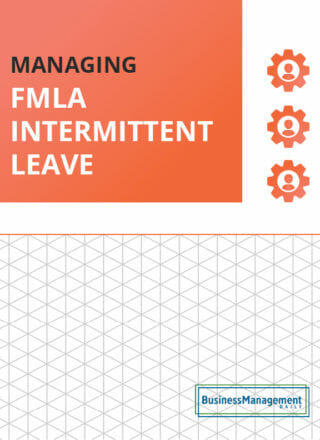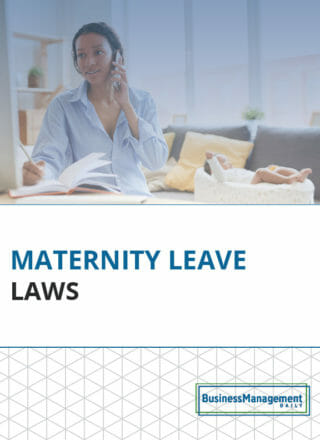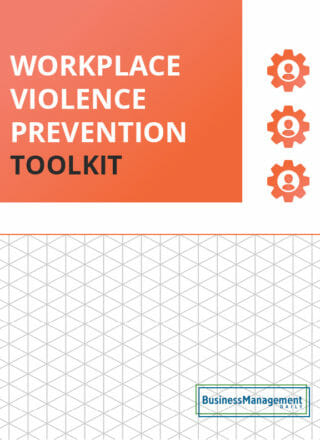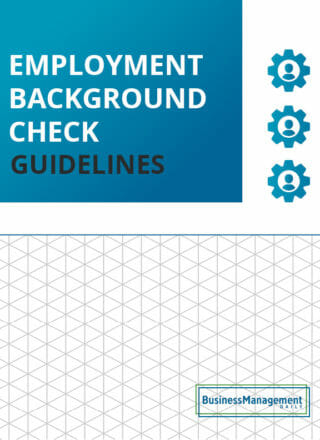Disparate treatment-vs-disparate-impact-guide
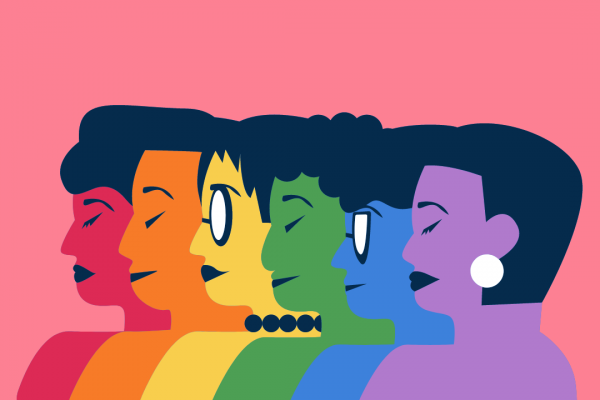 Eliminate discrimination: Protect your business and employees
Eliminate discrimination: Protect your business and employees
As employers, we must try to reduce all forms of discrimination as much as possible. That’s because instances of intentional discrimination are always harmful. They can cause expensive lawsuits, employee strife, and damage your organization’s reputation.
In particular, there are two types of discrimination you should know the difference between disparate treatment vs. disparate impact.
While both involve discriminatory practices against a protected class member, the two are distinct.
In this article, I’ll dive into the differences between disparate treatment and disparate impact cases. I’ll also provide some tools and solutions for preventing both from occurring at your organization.
While you may feel that no discriminatory intent is taking place at your company, that doesn’t mean it’s not occurring.
According to Wellhub’s State of Work-Life Wellness 2024, a surprising one-third of employees report feeling discriminated against at least some time.
As we’ll soon explore, discrimination can occur completely unintentionally, so taking the issue seriously is crucial, even if you don’t feel any direct discrimination is occurring.
Besides avoiding the adverse effects of discrimination, fostering a diverse, equal-opportunity workplace has other benefits.
Research by McKinsey shows that diverse and inclusive companies are 35% more likely to outperform their competitors. That means you have every incentive to eliminate employment discrimination at your organization. Read on to learn more.
Understanding disparate treatment
First, let’s learn about disparate treatment, which refers to discriminating against employees based on a protected characteristic, such as their national origin or sexual orientation.
Examples of disparate treatment include:
- Favoring a particular group of people during the hiring process (such as ignoring female applicants or preferring members of a specific race).
- Not granting promotions and other employment-related benefits to protected groups, such as racial minorities.
- Offering lower salaries to female employees.
The one thing these examples share in common is that they’re all instances of intentional discrimination.
Disparate treatment appears as one of the theories of discrimination listed in Title VII of the Civil Rights Act of 1964. It occurs whenever an employer intentionally discriminates against a member of a protected class, and it violates anti-discrimination laws like Title VII.
The Equal Employment Opportunity Commission (EEOC) enforces employment laws that make workplace discrimination illegal. This means the EEOC actively takes on disparate treatment cases around the United States.
Having an employee file a complaint with the EEOC is never good for an employer and often damages their reputation.
It can also cause employee morale and engagement levels to plummet, making it more challenging to attract top talent.
That’s why modern-day organizations must implement employment policies prohibiting and punishing discrimination. That starts by fostering a diverse workforce that promotes equal opportunities for all employees, regardless of race, gender, or sexual orientation.
What are the protected classes under Title VII of the Civil Rights Act of 1964?
Before moving on to disparate impact discrimination, we must define the protected classes and characteristics we mentioned.
Various federal laws guarantee protection from disparate treatment to the following characteristics:
- Race. This refers to all acts of discrimination against an individual’s race, such as black, white, Asian, or Hispanic.
- Color. It’s important to distinguish color from race, as it’s possible to discriminate purely on the color of one’s skin.
- Gender. Title VII prevents employers from discriminating against someone’s gender in the workplace.
- National origin. This is another category that’s separate from race and color. It’s possible to discriminate against someone based on their country of origin, such as being from Italy or the Middle East.
- Gender identity. Employers cannot intently discriminate against someone because of their gender identity, regardless of what it is.
- Sexual orientation. It’s also against federal law to discriminate against someone’s sexual orientation, such as being gay or lesbian. Sexual orientation was not a protected class under Title VII until the Supreme Court made a landmark decision in 2020 to include it and gender identity as protected characteristics.
- Age. Employers are not allowed to exclude older applicants purely based on their age. The same applies to other employment opportunities and benefits, such as promotions and bonuses. While age wasn’t included in The Civil Rights Act of 1964, it became a protected class in 1967 with the passing of ADEA (Age Discrimination in Employment Act).
- Disability. All physical and mental disabilities are protected under Title VII and enforced by the EEOC. This includes all physical impairments (such as blindness) and cognitive disabilities (anxiety, ADHD, etc.). If one of your employees has a disability, you may be required by law to provide reasonable accommodations (as long as they don’t bring undue hardship on your business).
- Religion. One of Title VII’s original five protected classes, religion, is a protected characteristic employers cannot discriminate against.
- Pregnancy. It did not become illegal to discriminate against pregnant women until the late 70s with the passing of the Pregnancy Discrimination Act of 1978. Since then, it’s been against the law to withhold employment opportunities because a woman is pregnant.
- Genetic information. Employers cannot discriminate against candidates or employees due to their genetic or family medical history. An example would be not hiring an employee because they have cancer (or because their family has a history of cancer). Title II of the Genetic Information Nondiscrimination Act of 2008 (GINA) is the legislation that made it illegal to discriminate against genetic information.
- Veteran status. Lastly, employers are prohibited from intentionally discriminating against United States Armed Forces veterans.
Intentionally discriminating against any of these groups qualifies as disparate treatment, so you should mention them in your company policies against discrimination.
Understanding disparate impact
Now, it’s time to explore the other side of the coin: disparate impact.
Disparate impact discrimination occurs whenever supposedly neutral employment decisions hurt certain protected groups.
Instances of disparate impact can be tricky to identify due to their nature.
Since the employer did not intend to impact any particular group negatively, data analysis is necessary to identify an instance of disparate impact.
For example, imagine a company that requires credit history checks for all new candidates. While the intention is to uncover fiscally responsible job candidates, the policy winds up disproportionately impacting racial groups from low-income backgrounds, which counts as a form of disparate impact.
Another instance of disparate impact would be testing candidates for physical strength during the interview process. While it may seem harmless, this policy would disproportionately exclude women.
Also, disparate impact is an unintentional form of discrimination.
The main defining factor of disparate impact is that it refers to organization-wide policies that apply to all employees and adversely impact certain protected groups.
This brings us to the main differences between disparate treatment and disparate impact.
What are the main differences between disparate treatment and disparate impact?
Here’s the primary difference between the two:
- Disparate treatment is an employer’s intentional discrimination of a protected class.
- Disparate impact is unintentional discrimination when a company policy or standard has unforeseen negative impacts on a protected class or characteristic.
The main difference comes down to intent.
If intentional, it would be disparate treatment; if unintended, it would have a disparate impact.
Another difference is that disparate impact results from company policies, while disparate treatment tends to happen individually (e.g., a particular manager doesn’t want to hire pregnant women).
Top ways employers can avoid disparate treatment and disparate impact
Now, let’s learn how to prevent disparate treatment and impact at your organization.
Implementing anti-discrimination policies will safeguard your organization from damaging lawsuits and negative impacts on employee morale.
Here’s a look at the best practices to avoid discrimination.
Audit your existing processes for biases
This tip is primarily a way to avoid disparate impact but can also stop disparate treatment.
It involves auditing all your existing business processes to ensure they aren’t discriminatory. While you may think all your processes are objective, you should always back up that claim with data.
Processes that you should closely examine include the following:
- Compensation
- Performance evaluations
- Your hiring process
- All other people’s processes
Also, the numbers for each protected group should be examined to ensure no disparate impact occurs.
For example, if one of your hiring processes disproportionately impacts Hispanic applicants, you should remove or amend it immediately.
Once your audit is complete, you’ll know that all your processes are discrimination-proof, and you won’t run into any instances of disparate impact that catch you off guard.
Offer diversity and inclusivity training for managers and employees
Next, you must ensure your staff can promote an inclusive company culture.
The best way to do this is to provide diversity and inclusivity training for all staff, especially managers and staff involved in the hiring process.
DEI training programs will help employees identify unconscious biases, learn respectful communication, and develop inclusive leadership practices. That way, your executives and hiring managers will be able to stop instances of discrimination whenever they occur.
Adequately trained staff also know how to identify and report unfair behavior whenever they see it happen.
This ensures that if discrimination does occur, it’s snuffed out before it can cause actual harm to your organization.
Set up anonymous reporting
Speaking of reporting instances of discrimination, you should set up a completely anonymous system.
This will make it extremely easy for your employees to report coworkers for discriminatory behavior, as they won’t have to fear repercussions from other employees.
For example, without an anonymous reporting system, an employee may not report a coworker’s discriminatory comments due to fear of retaliation.
With an anonymous reporting system, your staff will be more likely to report instances of discrimination and unfair treatment, regardless of who initiated them.
How can you ensure that your reporting system is indeed anonymous?
One of the best ways is to use anonymous reporting system software like HRAcuity. These kinds of programs are meticulously designed to provide employees with truly anonymous ways to report bad behavior. They’re far more effective than slipping notes into a suggestion box.
Provide paper trails for all processes
Every people process at your organization should have appropriate documentation.
This means you need to document every:
- New hire
- Performance review
- Disciplinary report
- Employment decisions
- Discrimination report
Keeping a clear paper trail has numerous benefits, the most important of which is that it protects you from frivolous lawsuits.
For example, suppose an employee decides to make up an instance of discrimination and file a complaint with the EEOC. In that case, your documentation will prove your innocence, as there will be no documented instances of discriminatory behavior.
Next, as previously mentioned, paper trails provide precise data for process audits. The more documentation you have on hand, the easier it will be to audit your processes for instances of discrimination.
Seek legal advice
Lastly, the best way to ensure compliance with all employment laws is to consult with legal professionals. Attorneys specializing in employment law will let you know if your processes are up to par, which is what you want.
If you’re facing a particularly sensitive or complex issue, your best bet is to connect with an experienced legal professional who can help you successfully navigate the situation.
As a bonus, should you land in hot water with the EEOC, you’ll already have a lawyer ready to go to bat for you.
Final thoughts: Disparate treatment vs. disparate impact
We’ve covered a lot at this point, so let’s recap the main points:
- Disparate treatment is intentional discrimination against a protected group by an employer.
- Disparate impact is unintentional discrimination brought forth by company policies and standards.
- Title VII of the Civil Rights Act of 1964 names five protected classes, and various employment laws since have added new groups.
- Auditing your processes, offering DEI training, setting up paper trails, and seeking legal advice can help avoid both instances of discrimination.
Avoiding discrimination is necessary for organizations of all sizes, so it’s essential to understand the difference between disparate treatment and disparate impact.
Additional resources:
PTO request policy: A comprehensive guide for employers ![]()
How to avoid layoff discrimination and associated lawsuits ![]()
Manager feedback questions to ask your employees and improve your leadership ![]()


